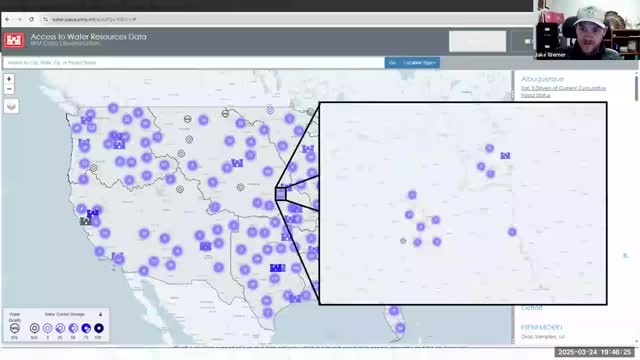Nebraska announces citizen science project to study live imaging sonar effects on fish catch rates
May 23, 2025 | Nebraska Game and Parks Commission (NGPC), State Agencies, Organizations, Executive, Nebraska
This article was created by AI summarizing key points discussed. AI makes mistakes, so for full details and context, please refer to the video of the full meeting. Please report any errors so we can fix them. Report an error »

The Nebraska Southeast District Fisheries Meeting held on May 23, 2025, focused on critical issues affecting local water bodies and fish populations. The meeting, organized by the Nebraska Game and Parks Commission (NGPC), aimed to address ongoing challenges and future initiatives in fisheries management.
One of the primary topics discussed was the current water levels in various lakes, particularly Conestoga Lake, which is experiencing significant low water conditions. Presenters highlighted that the lake's surface elevation was approximately five feet below its full pool level, raising concerns about accessibility for boaters and the overall health of aquatic ecosystems. Other lakes in the region, including Yankee Hill and Olive Creek, were also noted for their low water levels, which could lead to potential fish kill events if conditions do not improve.
The meeting also addressed recent significant fish kill events at Big Indian and Killdeer Lakes, where a majority of fish populations were affected. The NGPC has already begun restocking efforts at Big Indian and plans to introduce more fish into both Big Indian and Redtail Lakes as conditions allow. However, the ongoing drought has left several reservoirs, including Killdeer and Cotton Veil, critically low, necessitating careful monitoring and management to prevent further fish mortality.
Another significant discussion point was the introduction of live imaging sonar (LIS) technology for anglers. This technology allows users to see fish in real-time, potentially increasing catch rates. However, concerns were raised about its impact on fish populations. Studies from other states have shown mixed results regarding the effectiveness of LIS, with some indicating that users catch significantly more fish than non-users. The NGPC is planning to conduct its own study to assess the impact of LIS on local fisheries, and they are seeking volunteers with LIS units to participate in this citizen science initiative.
In conclusion, the Nebraska Southeast District Fisheries Meeting underscored the pressing challenges facing local water bodies, particularly in light of drought conditions and fish population management. The NGPC's proactive approach to restocking and monitoring, combined with the exploration of new technologies like live imaging sonar, reflects a commitment to sustainable fisheries management in the region. As the situation evolves, continued community engagement and scientific research will be crucial in addressing these environmental challenges.
One of the primary topics discussed was the current water levels in various lakes, particularly Conestoga Lake, which is experiencing significant low water conditions. Presenters highlighted that the lake's surface elevation was approximately five feet below its full pool level, raising concerns about accessibility for boaters and the overall health of aquatic ecosystems. Other lakes in the region, including Yankee Hill and Olive Creek, were also noted for their low water levels, which could lead to potential fish kill events if conditions do not improve.
The meeting also addressed recent significant fish kill events at Big Indian and Killdeer Lakes, where a majority of fish populations were affected. The NGPC has already begun restocking efforts at Big Indian and plans to introduce more fish into both Big Indian and Redtail Lakes as conditions allow. However, the ongoing drought has left several reservoirs, including Killdeer and Cotton Veil, critically low, necessitating careful monitoring and management to prevent further fish mortality.
Another significant discussion point was the introduction of live imaging sonar (LIS) technology for anglers. This technology allows users to see fish in real-time, potentially increasing catch rates. However, concerns were raised about its impact on fish populations. Studies from other states have shown mixed results regarding the effectiveness of LIS, with some indicating that users catch significantly more fish than non-users. The NGPC is planning to conduct its own study to assess the impact of LIS on local fisheries, and they are seeking volunteers with LIS units to participate in this citizen science initiative.
In conclusion, the Nebraska Southeast District Fisheries Meeting underscored the pressing challenges facing local water bodies, particularly in light of drought conditions and fish population management. The NGPC's proactive approach to restocking and monitoring, combined with the exploration of new technologies like live imaging sonar, reflects a commitment to sustainable fisheries management in the region. As the situation evolves, continued community engagement and scientific research will be crucial in addressing these environmental challenges.
View full meeting
This article is based on a recent meeting—watch the full video and explore the complete transcript for deeper insights into the discussion.
View full meeting
